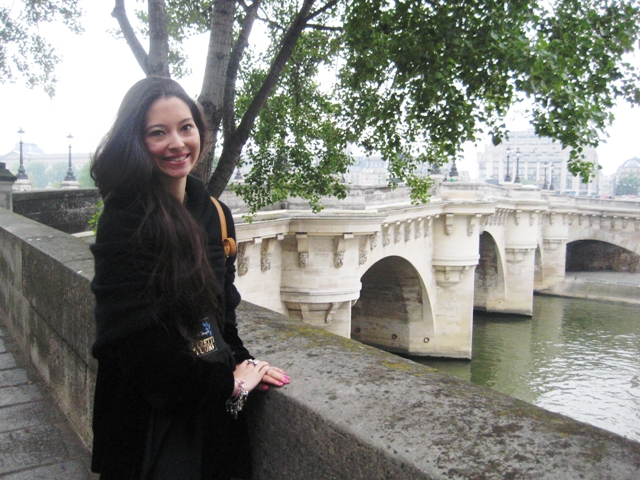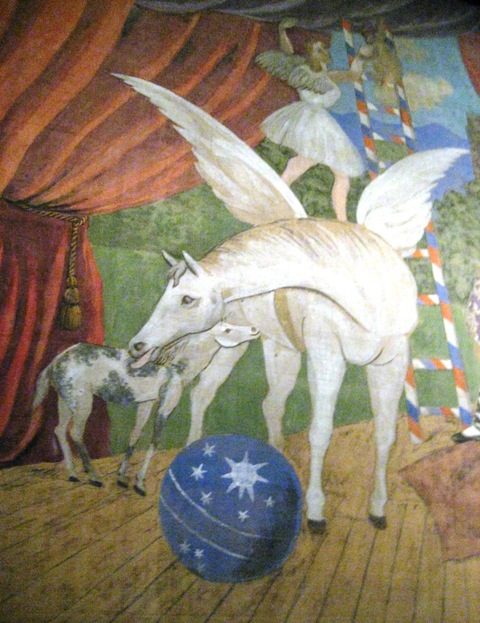- Heath Ledger Project
In May, on a very grey Parisian morning, I continued my interviewing for the Heath Ledger Young Artists Oral History Project with an interview with Hannah O’Neill. O’Neill is currently dancing on a seasonal contract with the Paris Opera Ballet, having dreamt of dancing with this company since she was a young child.

O’Neill graduated from the Australian Ballet School in 2011 and in that year she also auditioned for the Paris Opera Ballet. She was placed fourth in a field of over 100 and as a result of the audition received a seasonal contract. Confident and articulate and looking every inch the dancer, she is taking Paris in her stride. She has recently had her contract extended until the end of July when she will have to audition again for a place in the company. In the meantime she is looking forward to a forthcoming season of La Fille mal gardée.
- Meryl Tankard at the Cannes Film Festival
Over the past few years Meryl Tankard has been focusing her considerable talents on film making. She graduated from the directing course at the Australian Film Television and Radio School in 2010. It is a testament to her success in this endeavour that a short film she made called Moth was shown in May at the Cannes Film Festival. A glance at the program for the non-competitive Australian and New Zealand section of the Festival, Antipodes, puts her in exceptional company.
Tankard’s website has the following to say about Moth:
Moth is the story of three young women’s determination to be free, and is inspired by the stories from many reform schools in Australia in the 60s and 70s, and the brutal methods used to discipline the girls.
- Pablo Picasso’s curtain for Parade
It was a surprise to discover hanging in the still quite new Pompidou Centre in the north-eastern French city of Metz the curtain from the 1917 Ballets Russes production of Parade. Conceived for Diaghilev’s Ballets Russes by Jean Cocteau and first performed in Paris in May 1917, Parade had choreography by Léonide Massine, music by Erik Satie and costumes and settings by Pablo Picasso. The curtain is hanging in an exhibition entitled 1917, which has drawn together an array of visually disparate items, including some associated with war as well as with art in many of its manifestations. 1917 sets out to question the links between destruction, reconstruction and creation in a decisive year of World War I.

The exhibition carries some additional items relating to Parade, including a program and some interesting photographs of the 1917 cast. But it was, of course, the curtain that attracted my attention. Although it is of monumental proportions, it is quite an intimate, even gentle piece of art. Its colours are soft and blend easily with each other and the picture is built on exceptionally complex, allegorical imagery. In gives no clue to the strident characteristics of the performance and the antics of the dancers in Parade whose role is to attract an audience into the circus tent, which we see before us on the curtain.
I was in the fortunate position of being able to see a performance of Parade in 2005 when it was staged by the Ballet of Bordeaux at the Diaghilev Festival held in Groningen, the Netherlands. The article I wrote for The Canberra Times about the Festival was also published online by the magazine of the ballet.co site. Here is what I wrote about Parade:
Leonide Massine’s Parade was one of the most anticipated works of the festival and it did not disappoint as a significant collaborative work of the period. With designs by Pablo Picasso, libretto by Cocteau and music by Erik Satie, which incorporated the assorted sounds of a siren and a typewriter and several pistol shots, Parade was created in response to the well-documented demand from Diaghilev to Cocteau—’Astonish me!’ It was also inspired by the Cubist movement in the visual arts and brought Cubism off the canvas and into the theatre. Set outside a travelling theatre with the slight narrative centring on the attempts of the characters to entice an audience into the show, the work premiered in 1917 in Paris and was recreated by the Joffrey Ballet in the 1970s. In Groningen it was performed by the Ballet de Bordeaux and, while it will perhaps always remain slightly eccentric, its apparently simplistic and unadorned choreography is a perfect foil for its idiosyncratic designs and music.U
- Canberra dance
I was not in Canberra in May when Liz Lea presented her latest staging of 120 Birds. It also had a brief showing in Sydney at Riverside, Parramatta, after the Canberra season. Lea has a site that gathers together reviews of 120 Birds, including those for the 2012 Canberra/Sydney staging. In addition, here is a link to a preview piece I wrote for the one-woman version of 120 Birds, made for the National Gallery of Australia early in 2011 in conjunction with its exhibition Ballets russes: the art of costume.
- New York Public Library
Over the past two months I have been following with considerable interest the upheavals at the New York Public Library, which have been reported upon in The New York Times and other outlets. The most comprehensive background account of the situation is ‘Lions in winter’ by journalist Charles Petersen and appears in n+1 at this link.
Many have wondered why I left New York in 2008 after eighteen months as curator of the Jerome Robbins Dance Division of the New York Public Library for the Performing Arts, given that it appeared to be the job of a lifetime for me. Well the issues that led to my resignation are complex (and it was not to get married as one report suggested!), but the majority can be grouped under questions of professionalism and accountability (or lack thereof in my opinion) in certain areas of the Library. In addition, I was dismayed by attitudes to curatorial autonomy, which in most cases did not fit with mine. It should, therefore, be fairly obvious where my opinions lie with regard to the present discussions.
Whether the Dance Division, and other research divisions at Lincoln Center, will be affected in the short or long term by the new plans reported upon by Petersen and others is not clear. However, I believe that the Dance Division is now but shadow of its former self and has been heading this way for some time.
Michelle Potter, 30 May 2012